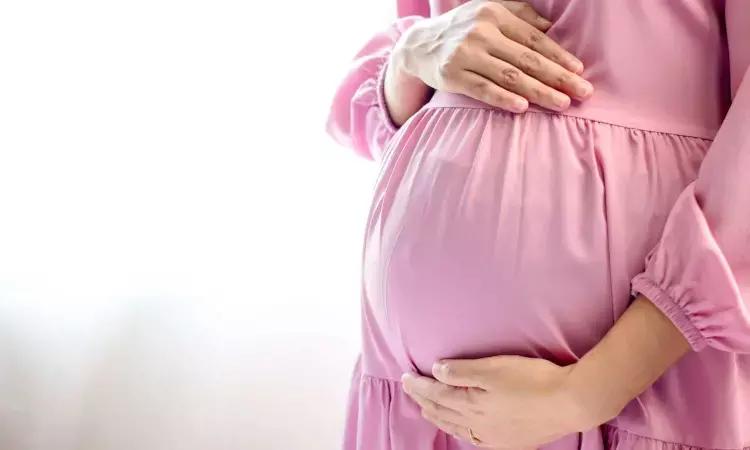Protecting Pregnant Women From Compound And Daytime-Only Heat Waves May Improve Heat-Related Preterm Birth: JAMA
- byDoctor News Daily Team
- 01 August, 2025
- 0 Comments
- 0 Mins

China: A recent study has explored the association between heat waves and preterm births (PTBs) in China, uncovering variations across urban and rural regions. The findings published in JAMA Network Open highlight the urgent need for tailored interventions to safeguard maternal and fetal well-being in the face of changing climate conditions.
"Exposure to compound and daytime-only heat waves in the last week before delivery was associated with preterm birth, specifically for pregnant women in rural regions exposed to daytime-only heat waves," the researchers wrote in their study.
As global temperatures rise due to climate change, concerns about health consequences escalate. This study sheds light on the link between heat waves and preterm births. It focuses on three distinct types of heat waves: daytime-only, nighttime-only, and compound (affecting both daily maximum and minimum temperatures). The research, spanning from January 2012 to December 2019, analyzed data from China's National Maternal Near Miss Surveillance System, encompassing 5,446,088 singleton births.
The study's unique approach also explored how different communities are impacted. The data encompassed a diverse representation of urban and rural populations across three socioeconomic regions. The study found that exposure to compound and daytime-only heat waves during the week before delivery significantly increased the risk of preterm births. Notably, this risk was more pronounced among pregnant women in rural areas exposed to daytime-only heat waves.
● Within the final analytical sample of 5,446,088 singleton births, 310,384 were identified as preterm births.
● The average maternal age in this cohort was 28.8 years, with exposed pregnant women facing escalated odds of preterm birth.
● Exposure to compound heat waves during the week prior to delivery correlated with heightened risk, with adjusted odds ratios (AORs) ranging from 1.02 to 1.04 across six different indexes.
● For daytime-only heat wave exposure, AORs varied from 1.03 to 1.04 in indexes including 75th-D4, 90th-D2, 90th-D3, and 90th-D4.
● The associations varied significantly between rural (AOR range: 1.05 [95% CI, 1.01-1.09] to 1.09 [95% CI, 1.04-1.14]) and urban (AOR range: 1.00 [95% CI, 0.98-1.02] to 1.01 [95% CI, 0.99-1.04]) regions, particularly during exposure to daytime-only heat waves in the 75th-D3 and 90th-D3 indexes.
This study highlights the critical role of climate adaptation in healthcare. The findings underscore the need for region-specific strategies to counteract the heightened risk of preterm births associated with heat waves. With climate change affecting communities in varying ways, it is imperative to tailor interventions that address the unique challenges faced by different populations.
As climate change continues to reshape environmental conditions, protecting the health of expectant mothers and their babies becomes paramount. The study's insights provide a clarion call for healthcare systems and policymakers to consider the intersection of climate change and maternal health. By implementing tailored interventions, especially in rural areas vulnerable to heat waves, we can work toward ensuring healthier pregnancies and safer childbirths despite the challenges posed by a changing climate.
Reference:
Guo, Y., Chen, P., Xie, Y., Wang, Y., Mu, Y., Zhou, R., Niu, Y., Shi, X., Zhu, J., Liang, J., & Liu, Q. (2023). Association of daytime-only, nighttime-only, and compound heat waves with preterm birth by urban-rural area and regional socioeconomic status in China. JAMA Network Open, 6(8), e2326987. https://doi.org/10.1001/jamanetworkopen.2023.26987
Disclaimer: This website is designed for healthcare professionals and serves solely for informational purposes.
The content provided should not be interpreted as medical advice, diagnosis, treatment recommendations, prescriptions, or endorsements of specific medical practices. It is not a replacement for professional medical consultation or the expertise of a licensed healthcare provider.
Given the ever-evolving nature of medical science, we strive to keep our information accurate and up to date. However, we do not guarantee the completeness or accuracy of the content.
If you come across any inconsistencies, please reach out to us at
admin@doctornewsdaily.com.
We do not support or endorse medical opinions, treatments, or recommendations that contradict the advice of qualified healthcare professionals.
By using this website, you agree to our
Terms of Use,
Privacy Policy, and
Advertisement Policy.
For further details, please review our
Full Disclaimer.
Tags:
Recent News
HC relief to 80-year-old doctor, pension benefits...
- 09 November, 2025
VACANCIES For SR Post At ESIC Medical College & Ho...
- 09 November, 2025
Tamil Nadu to Mandate National Formulary Subscript...
- 09 November, 2025
Emergency hysterectomy in Placenta praevia grade I...
- 09 November, 2025
Daily Newsletter
Get all the top stories from Blogs to keep track.


0 Comments
Post a comment
No comments yet. Be the first to comment!